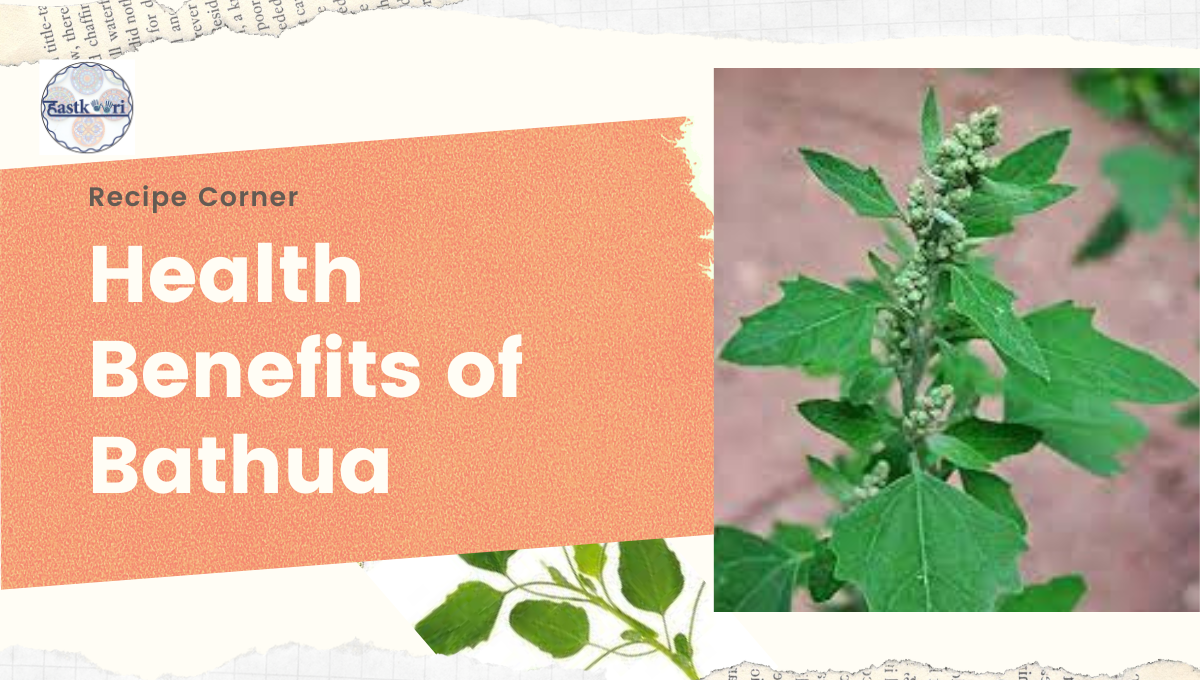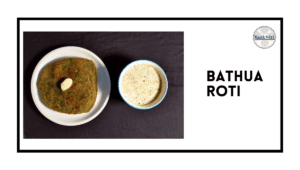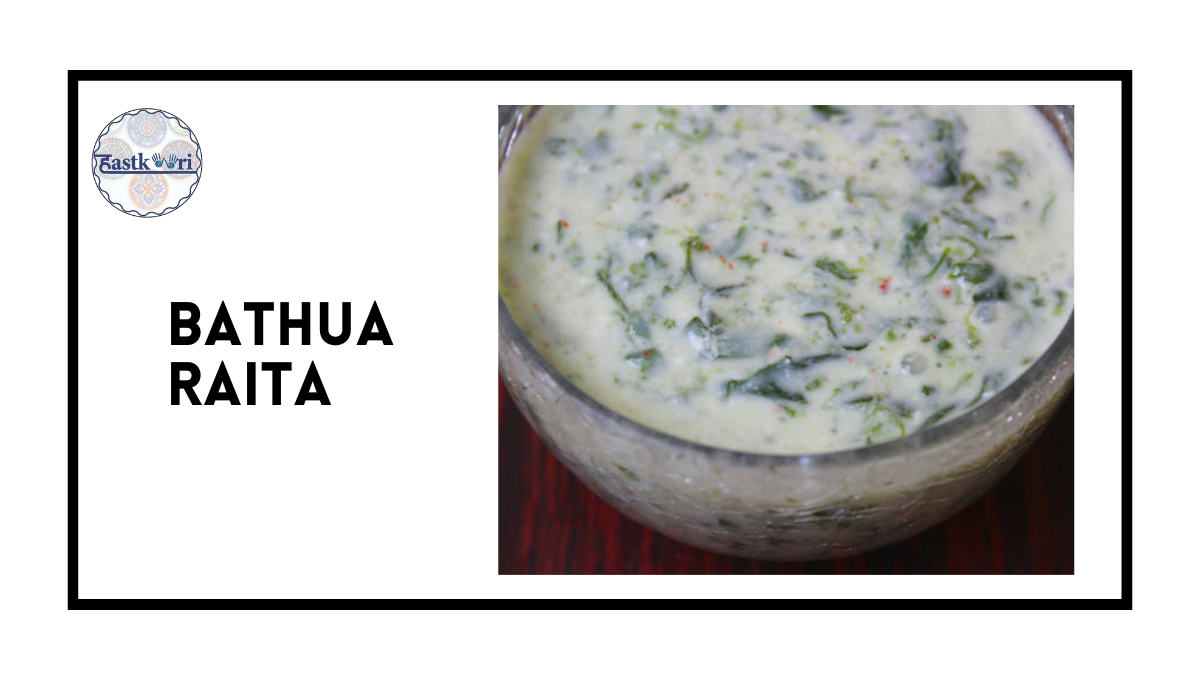In this article, we’ll talk about the amazing health benefits of Bathua (bathua leaves in english are called Lamb’s Quarters) to eat during winter. We’re hoping to persuade you to include more of it in your diet in order to improve your overall health and avoid various ailments.

Reasons why you should eat more of the underrated Bathua.
One of the many reasons to look forward to winter is the abundance of green vegetables! The vegetable market is flooded with methi (fenugreek), palak (Spinach), sarson ka saag (Mustard), and bathua, which will help you make your meal plates more green. Bathua, despite being extremely nutritious, is the least well-known and often overlooked of these.
Bathua, also known as Chenopodium album, is a leafy green vegetable that is available during the winter season. Because of its scarcity, you should consume it on a daily basis during the winter to reap the most benefits. Bathua can be found at any vegetable vendor and looks very similar to methi or saag because it is also sold in bunches.
Bathua is also known as lamb’s quarters, cheel bhaji, white goosefoot, pigweed, melde, wild spinach, and fat-hen. Chenopodium album is widely cultivated and consumed as a food crop known as Bathua in Northern India, Nepal, and Pakistan. A wild relative of the spinach plant, it is cooked in similar ways in India.
It is a highly nutritious winter vegetable with numerous health benefits. Interesting!
Bathua is high in vitamins A, C, and B, as well as essential minerals and antioxidants. It is high in amino acids, iron, potassium, phosphorus, and calcium, making it a nutritious food.
Here are 7 reasons why bathua should be on your winter menu:
Amazing Health Benefits of Bathua
-
Relieves constipation
Bathua is high in water content, a good source of fibre, and has laxative properties that can naturally aid digestion, relieve constipation and improve bowel movement.
-
Cell repair
To repair cells and improve cell function, our bodies require a steady supply of amino acids. Bathua is one of the best wintertime sources of amino acids. Because amino acids constitute a significant portion of our cells, they can play an important role in cell function, repair, and formation.
-
Blood purification
You’re probably aware that good skin requires a healthy diet. In fact, blood impurity is one of the primary causes of acne and frequent breakouts. Bathua can now be consumed on a regular basis to purify your blood and give you flawless skin.
-
May aid in weight loss
Bathua contains only 43 calories per 100 gram, according to USDA data. As a result, it’s ideal for people who want to lose weight while also eating healthily.
-
Improves eye health
Most of us have jobs that require us to spend the majority of our time staring at a computer screen. This way of life can have an effect on our eyes over time. Bathua’s zinc and iron content can help keep your vision healthy.
-
Encourages healthy hair
Bathua, which is high in protein, minerals, and vitamins, helps to strengthen your hair from the roots. This reduces hair fall, leaving your tresses soft, shiny, and healthy.
-
Beneficial to dental health
Is bad breath bothering you? It is not only inconvenient, but it can also be embarrassing. Bathua can be your one-stop solution for getting rid of bad breath. In fact, it can assist you in dealing with a variety of dental issues such as gum bleeding, sensitive teeth, and so on.
Bathua Vegetable in the Winter: How to Include Bathua in Your Diet
Bathua is a versatile vegetable that can be prepared in a variety of ways other than the traditional subzi (vegetable). You can incorporate this vegetable into your diet in a variety of ways, including saag and sabzi, as well as paratha, raita, and roti!
Here are some ideas for incorporating bathua into your winter diet:
- Bathue Ka Raita: Bathua raita, like all other vegetable raitas, is made by boiling and grinding bathua leaves into a paste. This paste can then be whisked into fresh curd with salt, chilli, and other seasonings and spices.
- Bathua Saag: Like sarso and palak saag, bathua saag is a delicious winter main dish that goes well with rotis, parathas, and rice dishes.
- Bathue Ki Roti: Bathue ki roti is a filling and tasty winter flatbread that you’ll want to make again and again.

Bathua Roti To make this flatbread, boil the leaves and grind them into a paste, which is then mixed with wheat flour and a variety of other seasonings and spices. After that, the dough is flattened into circles and cooked on a griddle.
4. Bathua Parantha: Making bathua paratha is similar to making bathua roti, except that parantha is thicker and cooked with ghee as a grease.

Bathua paratha is a delicious desi winter breakfast.
Recipe No. 1
Recipe of Bathua Raita
During the winter, a small bowl of Bathua Raita is a daily must-have. Here are some of the reasons why Bathua Raita should be part of your daily winter diet:

Curd is an excellent probiotic and a must-have for gut health. When combined with the goodness of bathua, this raita becomes a healthy combo with numerous health benefits.
Bathua Raita is a Haryana specialty and a popular winter dish in Northern India. Bathua is a lesser-known leafy green that is nutritious enough to meet your daily nutrient requirements. Bathua is primarily grown in Himachal Pradesh and Rajasthan at elevations of up to 4,700 metres, which provides this leafy green vegetable with ideal growing conditions.
Bathua Raita Preparation
Ingredients needed
2 cups bathua, 4 cups curd, 1 teaspoon cumin powder, 12 teaspoon mint powder, 14 teaspoon chaat masala, and black salt to taste
Bathua Raita Preparation
Step 1
Wash and thoroughly clean the bathua. Remove the tough stems by clipping them.
Step 2
Fill a pressure cooker halfway with a cleaned bathua. Close the lid and add 1-2 cups of water. Allow it to cook for 1-2 whistles before turning off the heat.
Step 3
When all of the steam has been expelled, open the lid and remove the bathua.
Step 4
Strain the excess water and squeeze the bathua with your hands to remove any remaining water.
Step 5
Pour this bathua into a large mixing bowl. In the same bowl, combine the curd, cumin powder, mint powder, chaat masala, and black salt.
Step 6
Mix thoroughly with a fork or a whisk.
When the raita is thoroughly combined, it will be thick.
Garnish
Before serving, add some chopped onion for extra flavour.
Bathua Raita is nutritious and delicious when served with dal, sabzi, or curry.
And apart from Raita, there are a variety of dishes that can be made with bathua. Bathua can be used to make Saag, Sabzi, and even added to regular dals. Bathua can also be used to make rotis and parathas more nutritious by stuffing them with it.
Recipe No. 2
Bathua Ka Saag
Bathua ka Saag is a popular North Indian dish that is both delicious and nutritious. Bathua appears in abundance as winter approaches. It is an excellent main dish recipe for gatherings, kitty parties, and potlucks. This delicious saag is exactly the type of dish you should try during this chilly winter season.

Prepare this delectable saag for your family and friends using this simple and quick recipe, and impress them with your incredible culinary skills. Combine bathua ka saag with makkai ki roti and white butter to enjoy the rich flavours with your loved ones.
Ingredients of Bathua ka Saag
- 1 kilograms blanched bathua saag
- 4 teaspoon mustard oil
- 2 teaspoon garlic paste
- 6 green chilli
- 2 teaspoon cumin seeds
- water as required
- For Seasoning
- salt as required
- 2 teaspoon garam masala powder
- For Garnishing
- 5 cloves garlic
Bathua Ka Saag Preparation
Step 1
Begin by washing the bathua under running water and blanching the leaves. Place them in a blender jar and blend until they form a coarse paste. In a small bowl, roughly chop the green chilies and set aside.
Step 2
Heat mustard oil in a large saucepan over medium heat. When the oil bubbles begin to rise, add the cumin seeds and cook until the seeds begin to splutter.
Step 3
Combine the garlic paste and seeds. Saute for a minute before adding the bathua saag and green chilies. Sprinkle with salt and thoroughly combine the ingredients.
Step 4
Cook over low heat until the oil begins to leave the sides of the pan. Garnish with garam masala and garlic cloves and serve warm with parantha or roti.
NOTE: Bathua leaves side effects – Bathua is high in oxalic acid, so it should be consumed in moderation. Excessive bathua consumption may result in kidney stones.
Liked it!! Here are a few more recipes you might enjoy:
Vegan Cilantro Lime Ranch Dressing
Avocado Homemade Ranch Dressing
